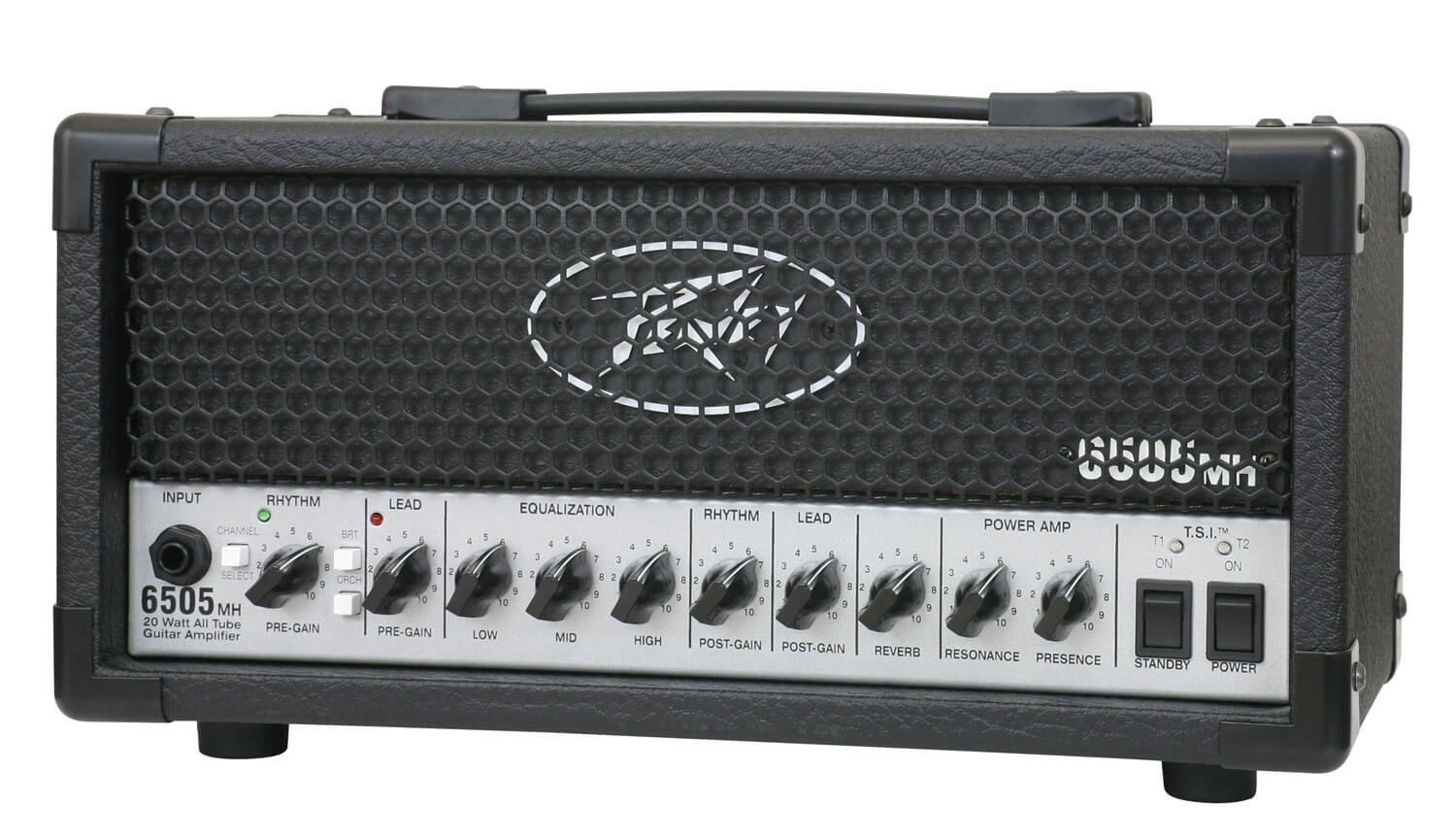
The basis for Peavey’s 6505 series goes back to the early ’90s, and over the years has seen various tweaks done here and there, while maintaining the tones it’s famous for. Now the twist is smaller, lower wattage, and recording-friendly, while still delivering the gain and clarity players desire.
So, this is small, not lunchbox small, but still small. The simple 1×12 cabinet we tested it out with was plenty wide to rest the head on, with space leftover for a pedal. A pair of EL43 power amp tubes, along with (3) 12AX7 preamp tubes reside inside, and the reasonable 20 watts keeps the volume at actual musical and listenable levels even with extra gain.
The controls are pretty simple, with gain and volume controls for the rhythm and drive channels along with a shared 3-band EQ and reverb section. The Resonance and Presence controls cover the overall low- and high-end response of the power amp section. The rear panel covers footswitch and effects loop connections, as well as an XLR output along with a USB connection. A single 1/8” headphone connection also resides here. Wattage is selectable from 1 to 5 watts, topping out at 20 watts.
OK, all the specs aside, is that big high-gain tone in there? Yes! Just like their bigger siblings. We’ve had some past experience with previous versions of the 6505, and while the size is small here, the tone is still massive. With humbuckers on the drive channel, it sits very nicely with the gain at noon. Rhythm parts are articulate and chunky, and really react to picking dynamics overall. Push the gain even higher, and there’s some really nice natural saturation that feels super smooth and liquid. It’s got modern hard rock and metal covered easily, with a very flexible EQ.
One area that seems to get overlooked in high gain amps is the clean sound, and paring the 6505 with a Tele on the clean channel was amazing, and engaging the crunch switch took it from sparkling to single-coil-bite. Country players should not overlook this amp just because of its high gain heritage. This also makes it a great pedal platform, along with the effects loop, making the standard 4-cable method of routing gain, fuzz and wah pedals in the front of the amp, and delays, modulations and reverbs in the loop, a reasonable option.
Now there’s some extra coolness, as it’s a lower wattage, it’s great for not only home use but it has enough power to handle most band practice situations with no issues. Small clubs will like the fact you can get that cranked up sound at a lower volume.
The XLR out on the back allows for running it into a mixer or into a DAW interface for recording. Even better, it doesn’t need to be connected to a speaker cabinet! But wait, there’s more! Now with the USB out it brings all of that into the guitar interface area. Simply connect it to a computer running your favorite DAW software, and it’s all set. Again, no need for a speaker cabinet! Sound wise it doesn’t skimp here, either. The amp’s sound comes through fantastically, with no issues. No need for extra plugins or extra impulse responses that load down a CPU. This really brings the opportunity to bring tube tone to home recording sessions. Which output sounds better? We had great results with both outputs, but we found the USB slightly less noisy than the XLR. We used a Focusrite 2i2 as our interface, but running into a higher end unit that has better processing will no doubt sound a bit better when using the XLR connection.
Considering the expense that a power attenuator/load box and a cab emulator would cost, this is a great overall value. Somehow Peavey found a way to bring all the reasons a high gain tube amp is desirable to a lower volume, and silent recording into a small form, with no sacrifices to the player in features or sound. Nice job.
PROS:
Low wattage, usable volume, big tones, USB connectivity, great price
CONS:
None
STREET PRICE:
$599
